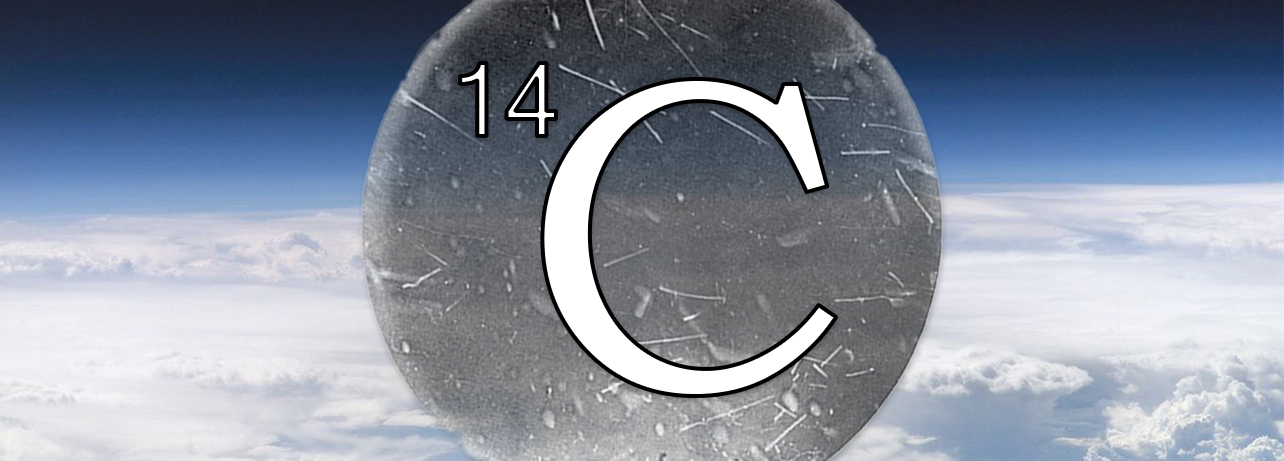
Radiocarbon dates are obtained on a small sample of the cultural materials archeologists find and study. Stones, bones, and wood charcoal—abundant and durable-enough to preserve for millennia in most archeological sites—comprise a fraction of the items once used by past peoples. Many more items were from perishable plant materials, which preserve in only exceptional conditions. From this subsample of preserved and datable organic materials, archeologists study both fleeting events and broad patterns in human lifeways. From these studies, archeologists build science-based chronologies, or models, of what the past was like and when events and patterns occurred. Chronological models are refined or otherwise changed with the addition of new chronological data.
Today, archeologists have access to a legacy of hundreds of thousands of radiocarbon assays, permitting new kinds of chronological analyses to be undertaken. This section summarizes important points made in this exhibit and highlights research opportunities that have arisen in this era of Big Data to promote thoughtfully executed and rigorously reported radiocarbon dating programs.
Radiocarbon Dating Essentials
A radiocarbon date is an estimated, probabilistic range of dates, meaning there are years within the date range that are more or less likely to be the true date of an event. A date is calibrated to correspond with our solar calendar and is presented in calibrated years (cal BP/BC/AD/BCE/CE).
A radiocarbon age is not calibrated and is presented in radiocarbon years before present (RCYBP).
Each radiocarbon assay should be critically evaluated; the relationship between the assay and the targeted archeological event must be considered as well as the quality of the assay. Each radiocarbon-based research question or statistical method will have unique considerations that will inform critical evaluation; a radiocarbon assay that is inappropriate for one question or method may be well-suited to another.
The chronologies archeologists build are models—they will change with the addition of new information!
Radiocarbon dating programs benefit from considerable forethought. What research questions are being addressed? What kinds of archeological materials directly relate to these questions? Where might these materials be encountered? Which samples should be selected for radiocarbon dating? Developing a strategy for radiocarbon dating before excavation begins and fine-tuning the strategy after returning from the field will strengthen the research and maximize the radiocarbon budget.
Critical contexts require multiple dates. A single radiocarbon date does not inspire a high degree of dating confidence, given its probabilistic nature and the complexity of cultural formation processes. Multiple assays are needed from critical contexts to attain dating precision and confidence, preferably dates from differing materials and from confining stratigraphic deposits.
If dating results do not match expectations, reconsider assumptions. A seemingly errant date may point to unrecognized contextual problems or may, in fact, be important data that could improve long-established chronologies. Replicating assays (re-dating sample material using a different method or lab) is a prudent option to determine the accuracy of questionable dates, rather than immediately dismissing them because they don't meet expectations.
Legacy assays should be revaluated. Legacy assays, inherited from older research projects, are sometimes problematic but often perfectly acceptable to use in new analyses. One of the biggest challenges to critically evaluating legacy assays is the considerable effort it often takes to chase down basic information about them. If the information needed is not available in an original report, it can sometimes be found in laboratory or field records curated in archeological archives or radiocarbon laboratories.
Curatorial facilities hold an enormous and untapped potential for radiocarbon dating. Botanical and faunal samples, artifacts, coprolites, bags of sediment, and other previously excavated materials are stored for future research, but often seldom used. Sometimes even leftover sample material from radiocarbon assays made decades ago are curated, ripe for redating using modern methods. The research questions an archeologist hopes to address through radiocarbon dating doesn't always require digging in the ground—chronological research can be accomplished by digging through the archives.
Radiocarbon data should be properly reported. Essential data to publish for all new radiocarbon assays includes the conventional radiocarbon age given in RCYBP (1σ standard error), the laboratory number assigned to the assay, the sample material (preferably identified to taxa), and the sample context. It is also important to report how the age was corrected for isotopic fractionation (measured by AMS or IRMS, or estimated), even if the δ13C value was not reported by the lab. In addition to the essential data, it is advisable to publish the reason for making a specific assay, as well as the relationship argued to exist between the dated event, the event of interest, and the archaeological context. By thorough reporting, researchers can maximize the analytic potential of these valuable scientific data for not only immediate project needs, but also for future research.
Accessibility of radiocarbon data is important for present and future researchers. Most radiocarbon data are scattered across curated documents, underpublished technical reports and published articles, many behind paywalls. Fortunately, archeologists are submitting data to regional or global radiocarbon databases in greater numbers today. A large and popular North American database is the Canadian Archaeological Radiocarbon Database (CARD).
Radiocarbon Dating Understood? Armed with the knowledge conveyed in this exhibit, are you ready to measure time with the cosmic isotope 14C found in so many archeological sites and materials? As explained, effectively wielding this powerful scientific tool requires an informed strategy and ongoing learning. Serious students of archeology can delve more deeply into the extensive scientific literature on radiocarbon dating by starting with key references listed in Credits & Sources. Happy Dating!